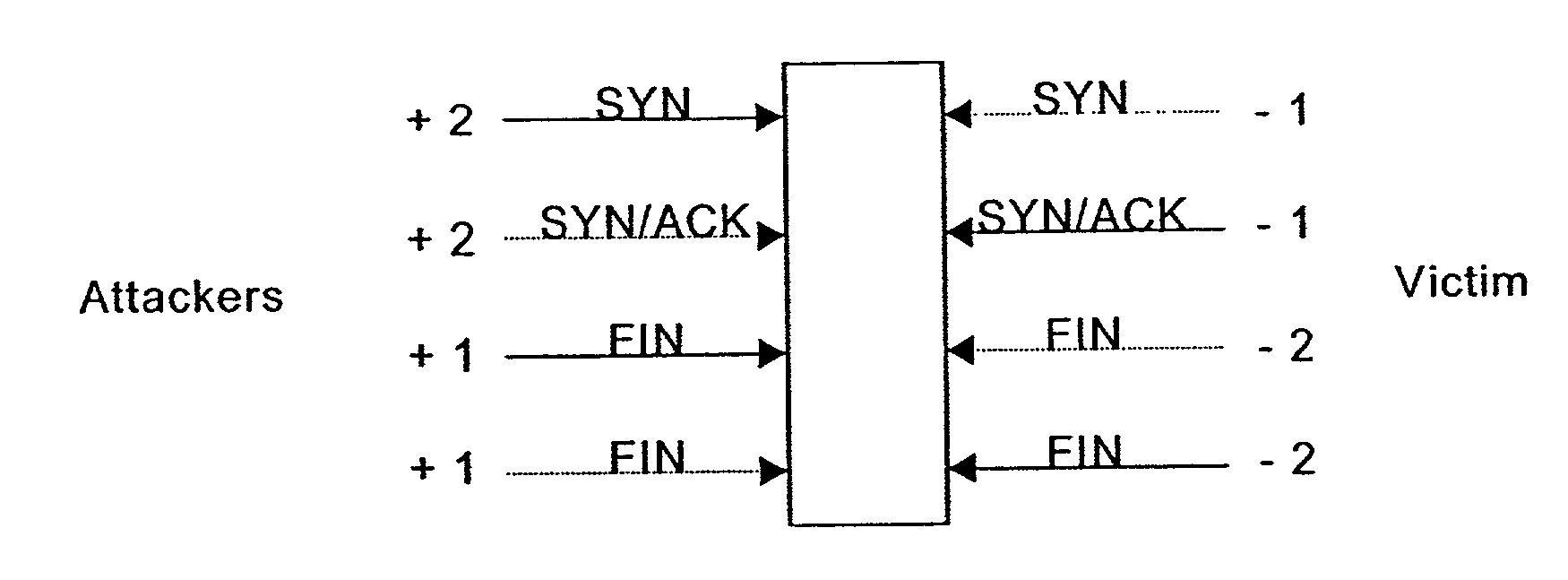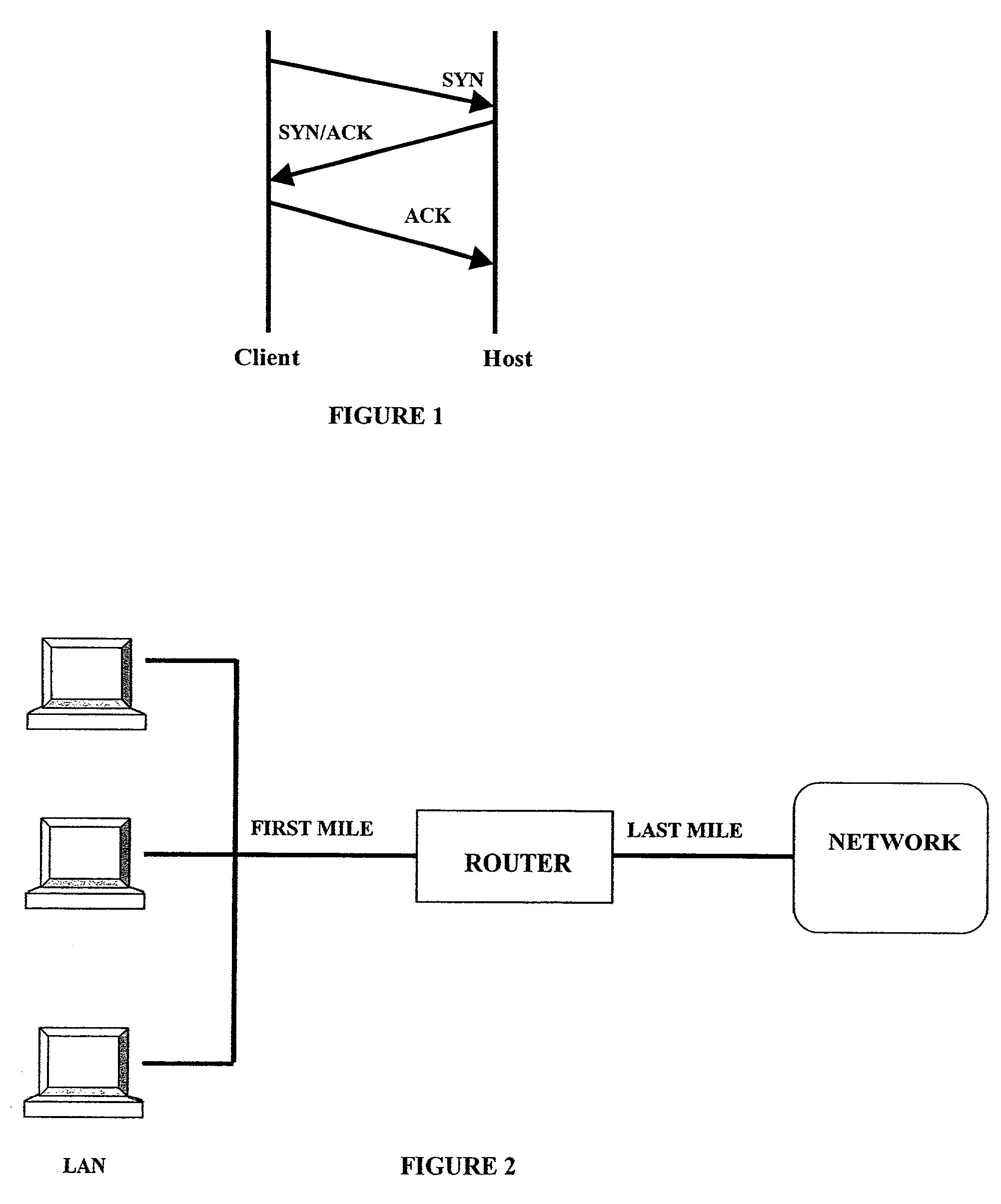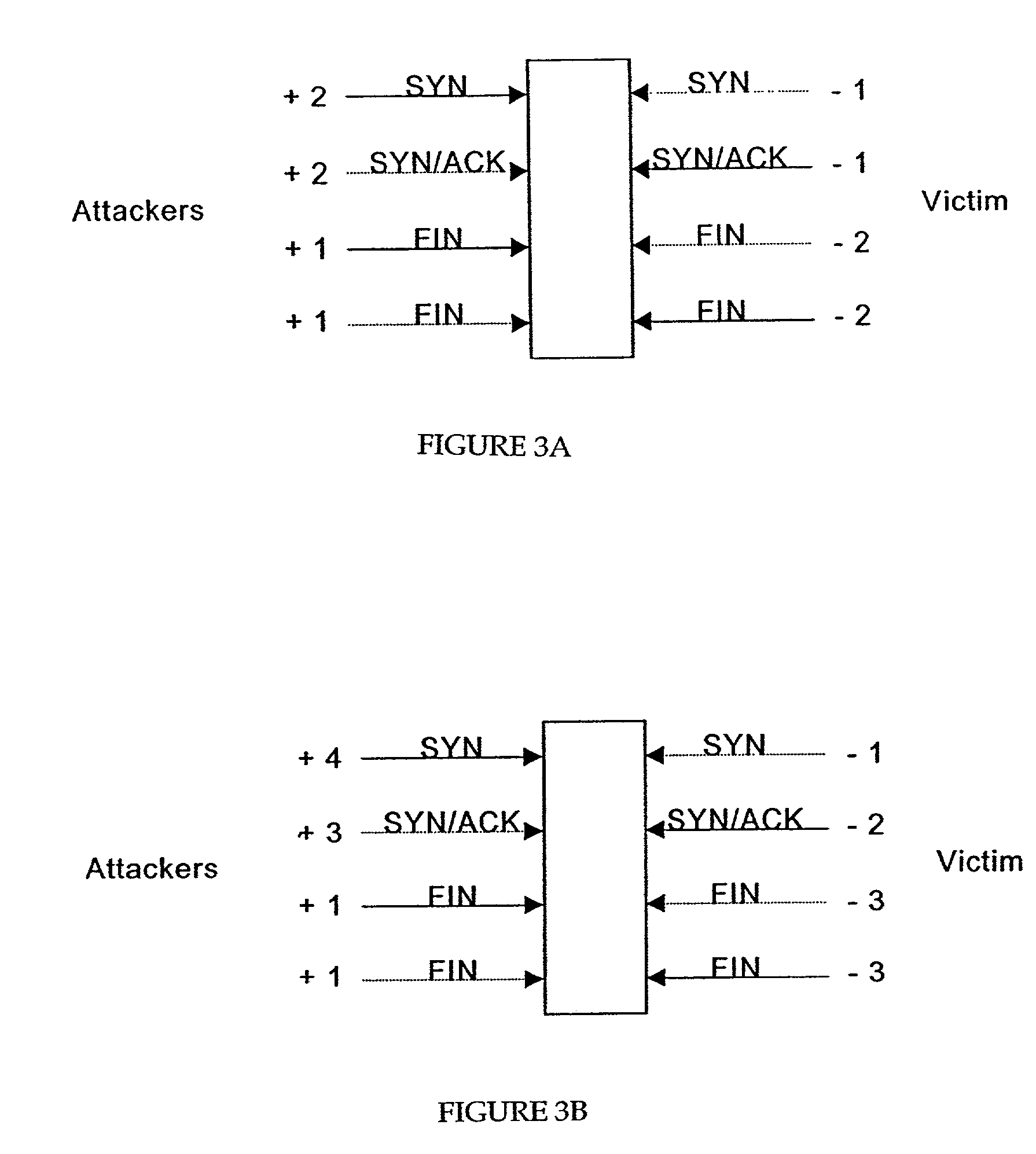Statistical methods for detecting TCP SYN flood attacks
a technology of tcp syn flood and statistics, applied in the field of computer based systems, can solve problems such as severe disruption of network services, overload of victims' sites, and inability to cope with incoming traffi
- Summary
- Abstract
- Description
- Claims
- Application Information
AI Technical Summary
Problems solved by technology
Method used
Image
Examples
Embodiment Construction
[0026]As shown in FIG. 1 the TCP connection protocol involves a three-way communication.
[0027]At the end of a connection request the client sends a FIN packet to the host which acknowledges receipt of the FIN packet and the client then responds to the host to close the connection. As indicated previously failure to complete the initiating handshake leaves the host also known in here as the victim in a vulnerable position to a SYN flooding attack.
[0028]As noted previously the present invention relates to a router detecting technique wherein the detection methods are implemented at the router. As shown in FIG. 2 the router is typically located between the local area network (LAN) and the network or Internet. The connection between the LAN and the router is considered to be the first mile router and the last mile router with respect to the network. As a first mile router, the router detects attacks coming from within the LAN at an early stage. As a last mile router, the router detects ...
PUM
 Login to View More
Login to View More Abstract
Description
Claims
Application Information
 Login to View More
Login to View More - R&D
- Intellectual Property
- Life Sciences
- Materials
- Tech Scout
- Unparalleled Data Quality
- Higher Quality Content
- 60% Fewer Hallucinations
Browse by: Latest US Patents, China's latest patents, Technical Efficacy Thesaurus, Application Domain, Technology Topic, Popular Technical Reports.
© 2025 PatSnap. All rights reserved.Legal|Privacy policy|Modern Slavery Act Transparency Statement|Sitemap|About US| Contact US: help@patsnap.com



